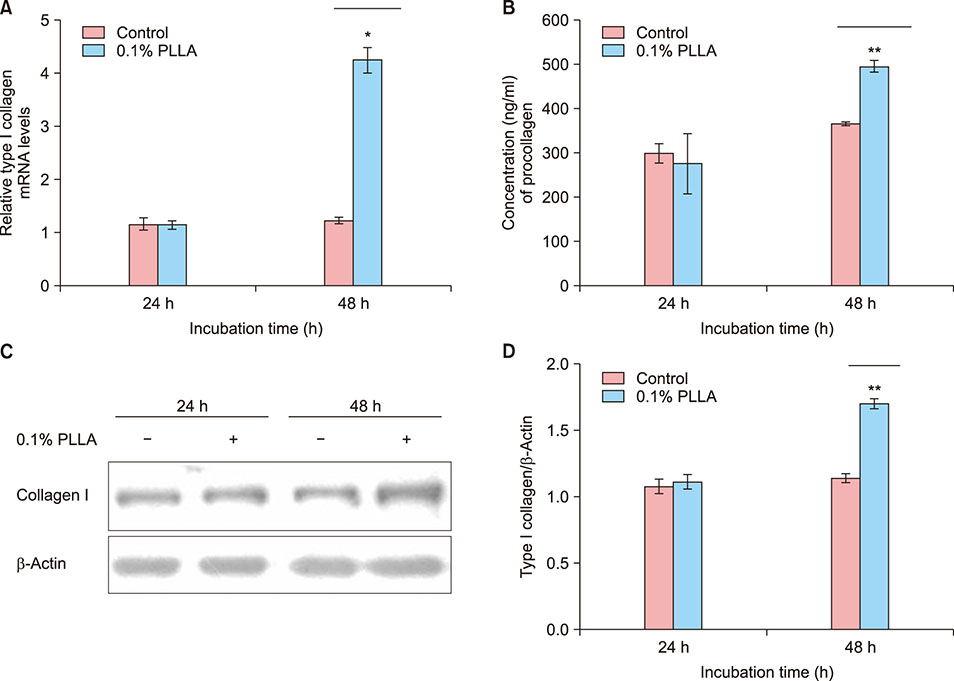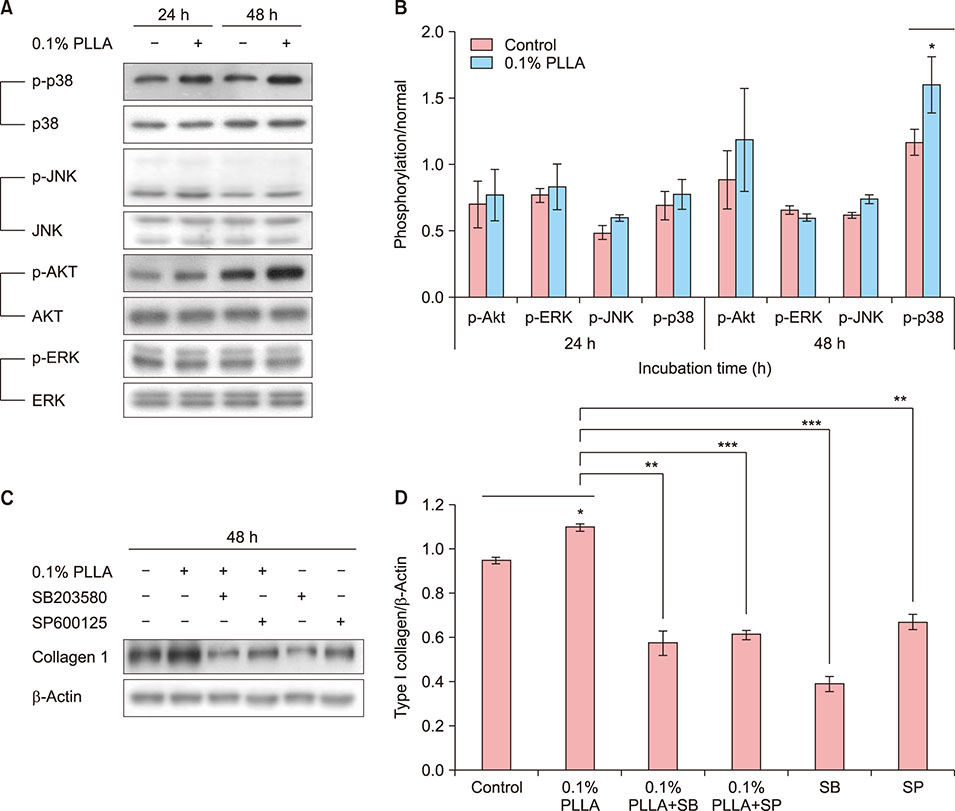Ann Dermatol.
2019 Feb;31(1):97-100. 10.5021/ad.2019.31.1.97.
Poly-L-Lactic Acid Increases Collagen Gene Expression and Synthesis in Cultured Dermal Fibroblast (Hs68) Through the p38 MAPK Pathway
- Affiliations
-
- 1Department of Dermatology, School of Medicine & Institute for Medical Science, Keimyung University, Daegu, Korea. ryoo111@dsmc.or.kr
- 2Department of Microbiology, School of Medicine & Institute for Medical Science, Keimyung University, Daegu, Korea.
- KMID: 2430812
- DOI: http://doi.org/10.5021/ad.2019.31.1.97
Abstract
- No abstract available.
MeSH Terms
Figure
Reference
-
1. Sridharan R, Cameron AR, Kelly DJ, Kearney CJ, O'Brien FJ. Biomaterial based modulation of macrophage polarization: a review and suggested design principles. Mater Today. 2015; 18:313–325.
Article2. Vleggaar D, Bauer U. Facial enhancement and the European experience with Sculptra (poly-l-lactic acid). J Drugs Dermatol. 2004; 3:542–547.3. Stein P, Vitavska O, Kind P, Hoppe W, Wieczorek H, Schürer NY. The biological basis for poly-L-lactic acid-induced augmentation. J Dermatol Sci. 2015; 78:26–33.
Article4. Vleggaar D, Fitzgerald R, Lorenc ZP. Composition and mechanism of action of poly-L-lactic acid in soft tissue augmentation. J Drugs Dermatol. 2014; 13:4 Suppl. s29–s31.5. Courderot-Masuyer C, Robin S, Tauzin H, Humbert P. Evaluation of the behaviour of wrinkles fibroblasts and normal aged fibroblasts in the presence of poly-L-lactic acid. J Cosmet Dermatol Sci Appl. 2012; 2:20–27.
Article6. Correia CR, Gaifem J, Oliveira MB, Silvestre R, Mano JF. The influence of surface modified poly(l-lactic acid) films on the differentiation of human monocytes into macrophages. Biomater Sci. 2017; 5:551–560.
Article7. Lemperle G, Morhenn V, Charrier U. Human histology and persistence of various injectable filler substances for soft tissue augmentation. Aesthetic Plast Surg. 2003; 27:354–366.
Article8. Goldberg D, Guana A, Volk A, Daro-Kaftan E. Single-arm study for the characterization of human tissue response to injectable poly-L-lactic acid. Dermatol Surg. 2013; 39:915–922.
Article9. Ren Y, Ni Z, Wang Y, Zhang L, Liu G, Liu X. 10% HA/SPEEK/PEEK composite promotes proliferation and differentiation of osteoblast cells through the MAPK and PI3K/AKT signaling pathways. Int J Clin Exp Med. 2017; 10:2127–2136.10. Li G, Li YY, Sun JE, Lin WH, Zhou RX. ILK-PI3K/AKT pathway participates in cutaneous wound contraction by regulating fibroblast migration and differentiation to myofibroblast. Lab Invest. 2016; 96:741–751.
Article
- Full Text Links
- Actions
-
Cited
- CITED
-
- Close
- Share
- Similar articles
-
- The Effects of Basic Fibroblast Growth Factor(bFGF)on Type I and VII Collagen Gene Expression in Cultured Dermal Fibroblast
- Effect of Glycolic Acid on Collagen Gene Expression in Cultured Human Skin Fibroblasts
- Effect of Granulocyte-macrophage Colony-stimulating Factor and Ascorbic Acid Co-supplementation on the Fibroblast Proliferation and Collagen Synthesis
- Interleukin-10 Differently Regulates Type I Collagen and Stromelysin-1 Promoter Activities in Dermal Fibroblast Cultures
- Effect of Polyinosinic-Polycytidylic Acid on MUC5B Expression in Human Airway Epithelial Cells



